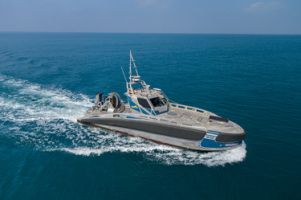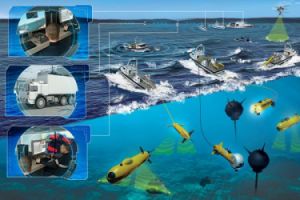Rooting out the new undersea mine threats in disguise

9/9/2019
To the undersea divers, it looked like just an ordinary discarded refrigerator sitting on the ocean floor. Except that inside it was stocked not with food or beverages but highly dangerous explosives.
This example illustrates the new disguises that underwater mines are taking today as the threats to navies evolve from conventional mines to new, more sophisticated and so more lethal explosive devices, just as there are IEDs (improvised explosive devices), there are also UIEDs (underwater improvised explosive devices).
“Mines are the poor man’s weapon,” says Lionel Collot, Mine Warfare Product Line Director, Thales. “They cost very little to make, so they have become the weapon of choice for terrorists. They have become smaller with textures and special coatings that make them look like a rock, or some other ordinary object. That’s what makes these IEDs so difficult to detect.”
"Mines have become smaller with textures and special coatings that make them look like a rock, or some other ordinary object." Lionel Collot, Mine Warfare Product Line Director, Thales
Navies need to protect their nuclear submarines, strategic commercial access, aircraft carriers and amphibious operations of expeditionary forces. So they are turning to Thales, their long-standing partner in conventional mine hunting, to help them make the difficult transition to autonomous and unmanned mine warfare.
The challenge to protect ships against the mines-in-disguise has led to a end-to-end (detect to dispose) approach by Thales through precise identification of the threat for autonomous and unmanned mine countermeasures.
The breakthrough has already led to its adoption by the French and UK navies.
Thales technologies empower autonomous and unmanned mine warfare
Since mines are smart and dangerous (some new mines can even detect diver presence), Thales’s technology has made it possible to use an unmanned approach to mine detection. “Autonomous Underwater Vehicles” (AUV) are essentially drones that go from the mother ship to the minefield, make an analysis, and take pictures using embedded sensors and software to classify the object. They can also destroy the mines – and perform all these duties without exposing human lives.
To develop the system, based on autonomy, Artificial Intelligence (AI), Big data analytics and Cybersecurity, Thales worked with SME’s, including a partnership with the UK’s ASV for the unmanned surface vessel (USV). The global leader in conventional mine countermeasures systems - having equipped more than half of the world’s in-service fleet of mine hunters - Thales has invested massively in recent years in the development of future autonomous mine countermeasures, including technology that uses sonar to “see” objects.
The first operational autonomous mine countermeasures system in the world is already being used in the French - UK Maritime Mine Counter Measures (MMCM) programme.
Thales also recently won the ORCA programme for the Royal Navy consisting of modernizing the current CMS of conventional mine hunters, capable of managing unmanned assets.
This holistic and system approach permits Navies to transition safely from legacy MCM to autonomous and unmanned Mine CounterMeasure systems.











